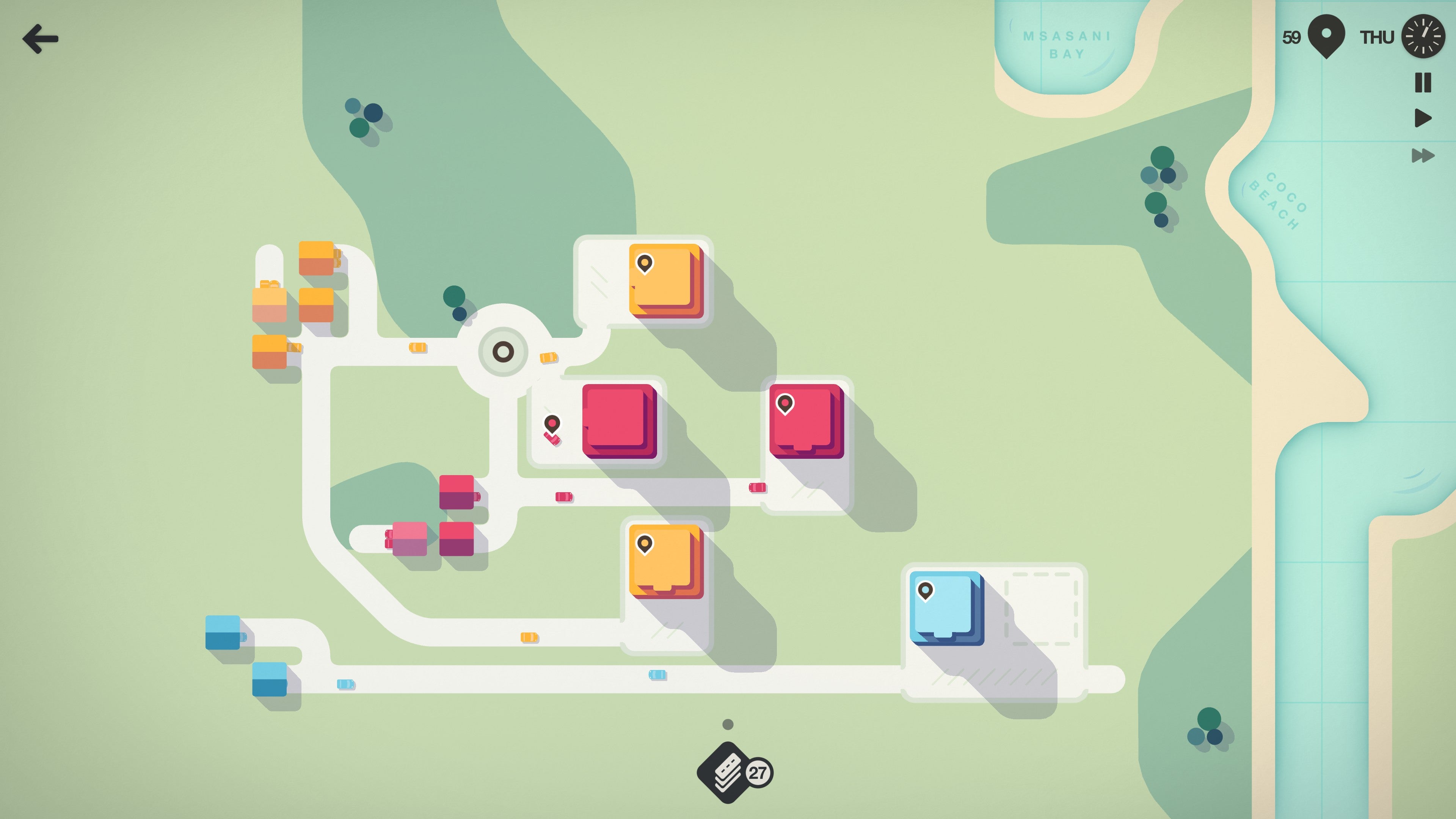Originally released via Apple Arcade and now available on PC, the concept of the game is blissfully, eighties-design era simple. You create a city, but this isn’t a typical city builder: all you have to do is craft the road system. Buildings large and small crop up as time progresses, and your job is simply to connect everything up in a sensible manner that encourages further growth. You have a limited amount of roads and accessories such as roundabouts, traffic lights, bridges, and of course motorways at any given time. Your job is to carefully juggle the needs of the city with the resources you have, producing a layout that minimizes traffic jams. Buildings are color coded - so blue homes will spit out cars of the same color that need to make their way to blue businesses - and therefore quickly the game’s randomly spawning infrastructure will force you to make hard decisions about moving around resources to keep the city moving. If things get too clogged up, it’s game over. If all of this sounds familiar, that’s because it’s very similar to a Dinosaur Polo Club title, Mini Metro. That game was built around railway infrastructure - but the freedom of the open road means that somehow the options you have on the table at any given moment gives this game’s action the impression of being less constrained than its predecessor. In reality they are very similar, but also different in a few precise and cleverly-calibrated ways that ultimately make Mini Motorways the far superior of the two. I love city builders, but the intricacies of road design and avoiding traffic jams are always my least favorite part of titles like Cities Skylines. The sprites for gridlocked roads from SimCity SNES and SimCity 2000 are seared into my mind from the many hours they spent taunting me. And yet… something about Mini Motorways evokes none of that stress, of that frustration. Even as I see the road systems overloaded, a failure and game over looming, I’m never mad: I just spring into action, trying to drop down an emergency motorway or roundabout to provide a shortcut or ease the flow of traffic. Part of it is the mood, I suppose. The look of the game is simple, and yet at the same time it feels a disservice to use such a word to describe its artistic presentation. There’s a variety of maps, each loosely based on a real-world city, meaning real-world topography such as rivers will impact how you approach matters. Each city has a subtly different color scheme that gives it its very own mood, and despite being relatively threadbare, there’s a welcoming warmth to the visuals. For those who might struggle with the default setup, there is also a colour-blind toggle. Regardless of which visual mode you’re in, the soundtrack is similarly pleasing. It eases you along, and where it’d be easy for a title such as this to slip into the cliche of traffic noises, of horns ringing out when things go wrong - it keeps it chill. The challenge is fierce, but the mood is always calm. Further, each city begins to look truly wonderful as you get deeper into games. Playing Mini Motorways, I begin to more deeply recognize why so many British cities look as they do from above; a complex web of asphalt spaghetti, broad modern roads stacked next to narrow modern ones. Taken from above, it’s more like a living thing, like veins and arteries, than the infrastructure of a city. That rings true here. There’s nothing so complex as road width in Mini Motorways, but nevertheless you can take multiple screenshots throughout a game and tab through them afterwards to see the organic sprawl of the city and your road system stretch wide. When combined with the lovely look of the game, a ‘finished’ city - which is to say one where you’re about to fail - is a complicated and unique work of art. Mini Motorways is a game that I can just vibe with. There was a period of time when I’d boot Mini Metro every single day in order to undertake the daily challenge. I can see that being the case again here. There’s an intricate, impossible-feeling balance to this game; it is fiendishly difficult and filled with tactical nuance with even things like the angle of how roads join one another impacting traffic speed - and yet it is also joyously mellow and inviting, the perfect way to whittle away some spare minutes. I can barely say a bad word about it.

